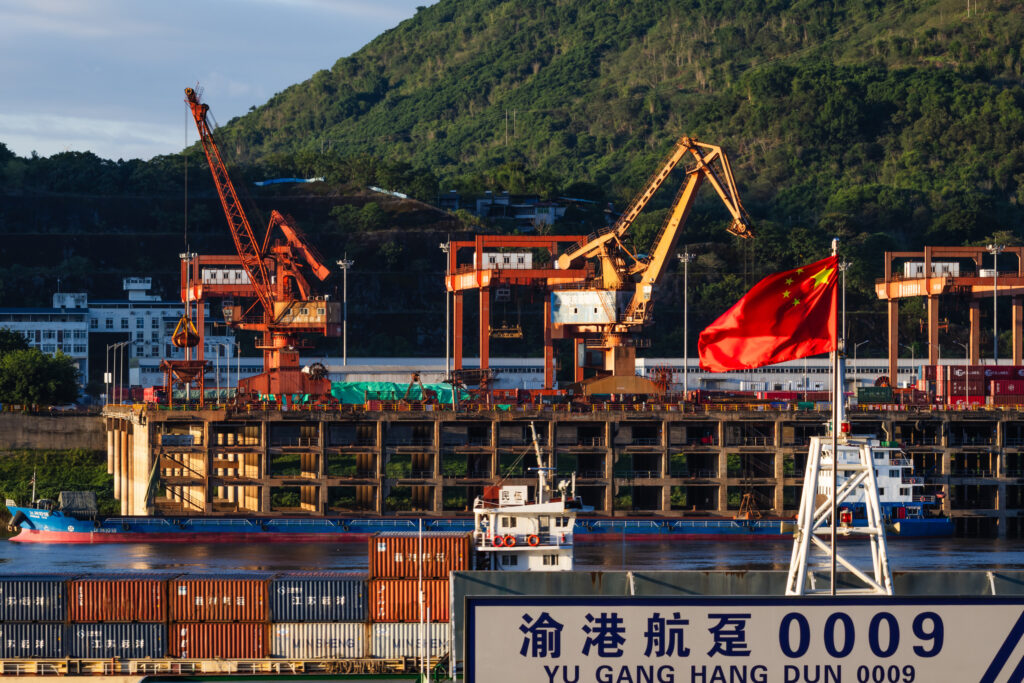The Chinese economy slowed significantly in August, as a tranche of crucial indicators missed the mark on Monday.
According to the National Bureau of Statistics (NBS), China’s retail sales rose 3.4 percent in August compared to a year prior, the weakest pace of growth since November and falling short of the 3.9 percent gain economists surveyed by Reuters had forecast.
Meanwhile, growth in industrial output slowed to 5.2 percent year-over-year from 5.7 percent in July, marking the lowest reading since last August.
Why It Matters
The new data comes at a critical time for Beijing as it attempts to negotiate with the U.S. on a number of contentious economic issues, principal among them being tariffs.
China’s economic might—and the assertion that it can prosper even without American customers—has been considered a key source of leverage for the country in the ongoing trade dispute as it attempts to push for a relaxation of restrictions on its exports.
What To Know
As well as industrial output and consumption having experienced their worst month of 2025, August also saw a continuation of Beijing’s deflationary struggles, with the consumer price index (CPI) dropping 0.4 percent from a year earlier and producer prices for industrial products falling 2.9 percent.
Deflation and China’s wider economic malaise have been attributed to a notable slowdown in consumer spending. This has already spelled difficulty in China’s ailing property market, though Beijing has promised to “vigorously boost consumption” by increasing citizens’ incomes.
The issue of weak domestic consumption has been brought into sharper relief by threats now facing China’s exports.
According to the NBS, China’s economy grew at 5.3 percent year-over-year in the first six months of 2025, in line with the country’s five-percent target for the year. However, exports are showing signs of slowing, and the outcome of ongoing negotiations with the U.S. over tariffs and trade could determine whether Beijing can maintain its first-half momentum.
Officials from both countries have recently wrapped up a two-day meeting in Spain, with the U.S. delegation led by Treasury Secretary Scott Bessent and Trade Representative Jamieson Greer.
As well as tariffs, key areas of contention included America’s opposition to China’s purchase of Russian Federation oil—an issue which saw India’s tariff rates doubled in early August—as well as the future ownership of the short-form video-sharing app TikTok.
What People Are Saying
Zichun Huang, China economist at Capital Economics, wrote in a note quoted by Fortune: “The activity data point to a further loss of momentum; While some of this reflects temporary weather-related disruptions, underlying growth is clearly sliding, raising pressure on policymakers to step in with additional support.”
Wendy Cutler, vice president of the Asia Society Policy Institute, in comments shared following the Madrid talks: “There is little time to hammer out a meaningful trade agreement. What we are more likely to see is a series of ad-hoc deliverables, possibly a Chinese commitment to buy more U.S. soybeans and other products, a U.S. agreement to hold back on announcing certain further U.S. high tech export controls, and another 90-day rollover of the tariff pause.”
What Happens Next?
On Monday, President Donald Trump said that the second day of meetings in Madrid had gone “very well.”
Treasury Secretary Bessent told reporters that a framework deal had been reached to switch TikTok to U.S.-controlled ownership. He declined to provide specifics, but said that President Trump and Chinese President Xi Jinping would “speak on Friday to complete the deal.”
An agreement struck between the U.S. and China in August extended their original tariff truce from May, capping duties on Chinese imports at 30 percent and those for American goods at 10 percent until early November.
Trade Representative Greer said on Monday that the U.S. would be open to extending this deadline “if the talks continue in a positive direction.”
Read the full article here

















